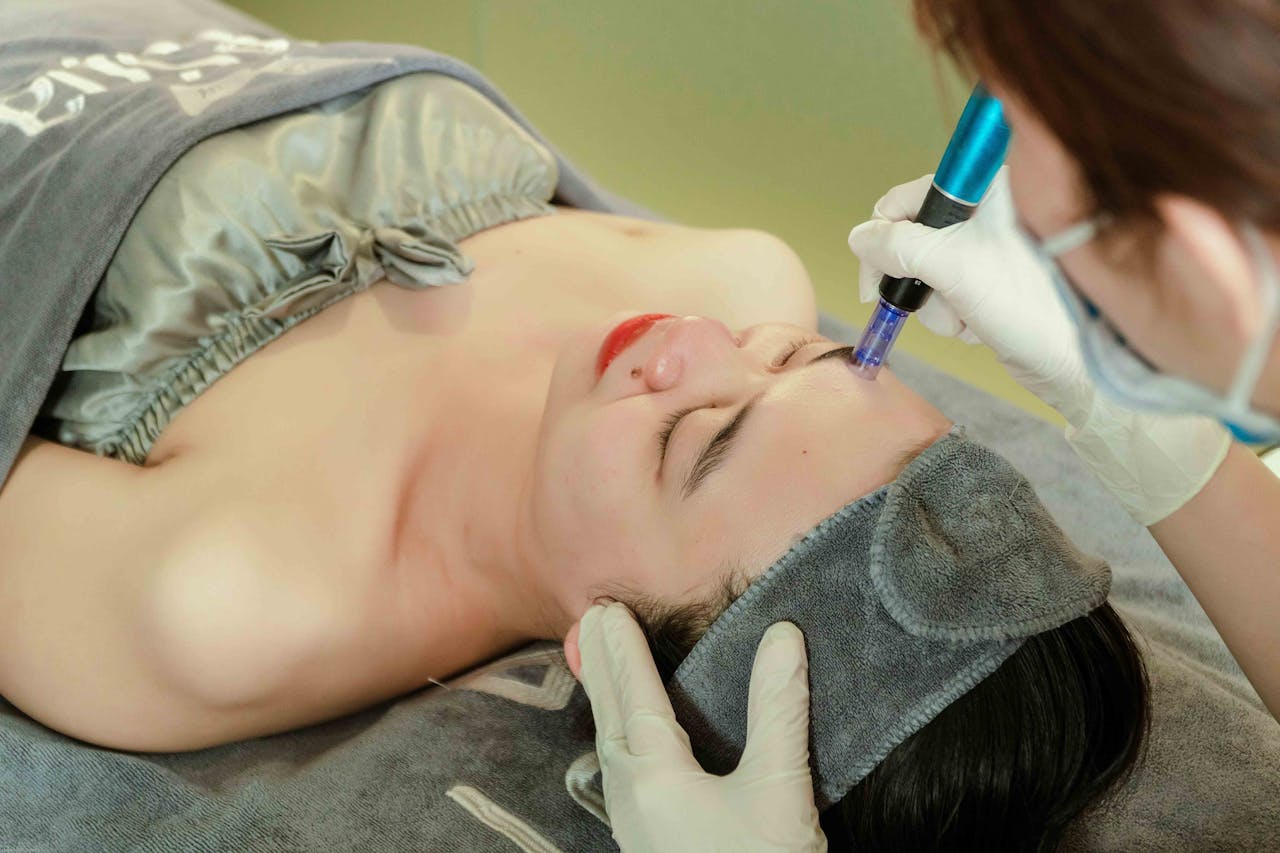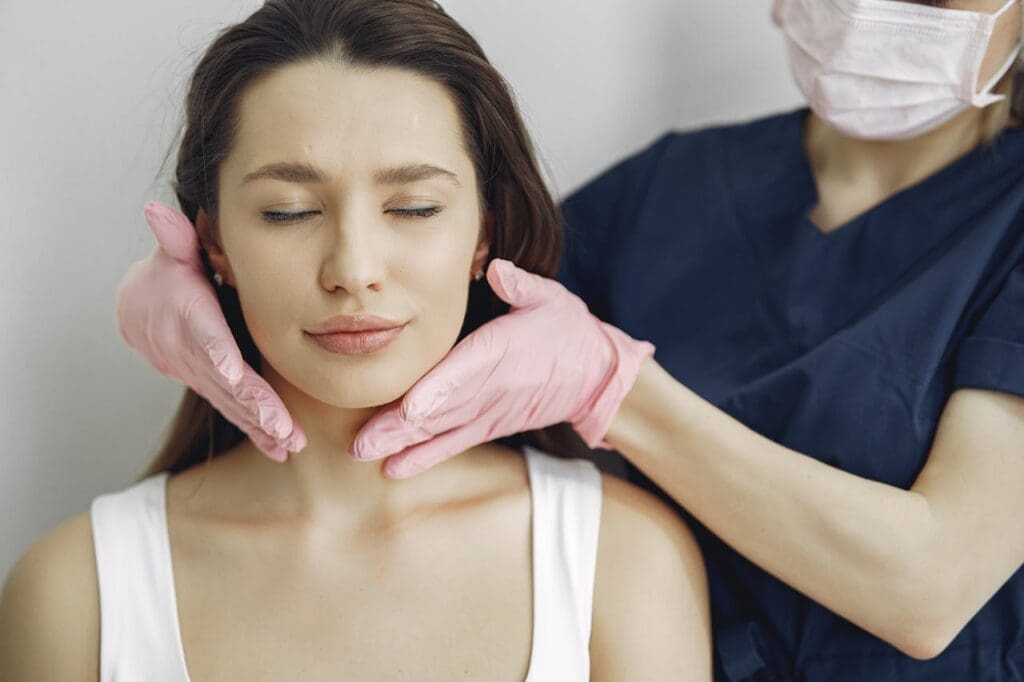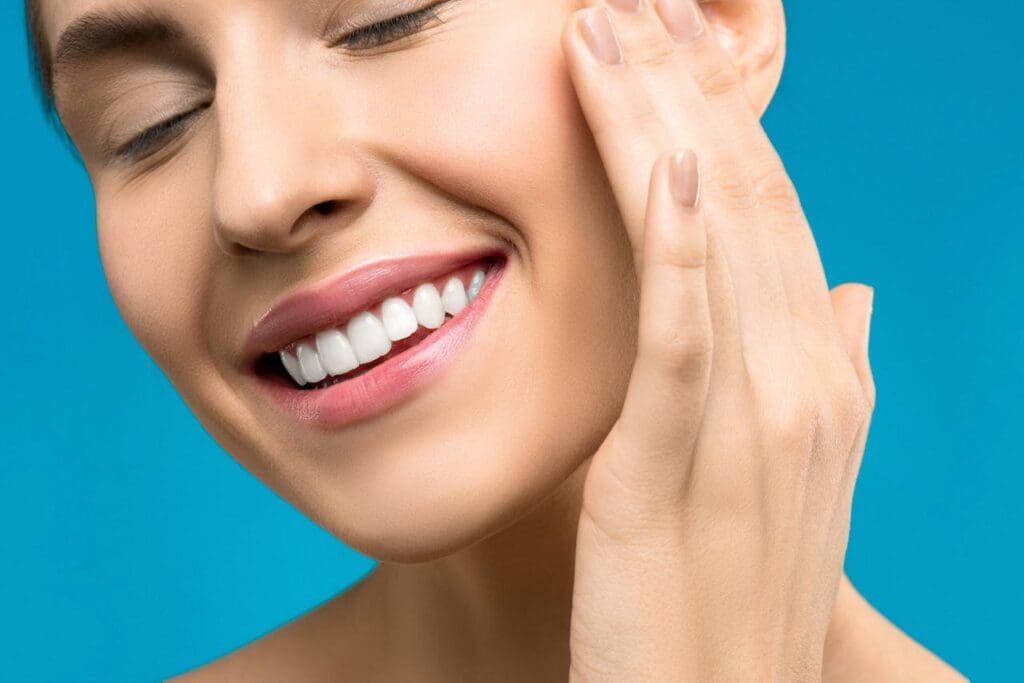Regenerative facials like platelet-rich plasma (PRP) and platelet-rich fibrin (PRF) treatments have gained traction in both aesthetic and medical fields. These unique treatments are popular for using components derived from your blood to deliver astounding results.
Although each of these treatments is designed to rejuvenate your complexion, promote skin healing, and address various other cosmetic concerns, it’s crucial to learn what sets these two apart. Decoding the differences between PRP and PRF is the key to deciding which treatment might be the right choice for you.
Our guide to PRP vs. PRF focuses on the core benefits of these two procedures and the key differences between them in terms of cost, downtime, and targeted areas.
How Does PRP Work?
Procedure
PRP harnesses your blood cells’ natural growth factors for regenerative treatment. This procedure involves drawing a small amount of your blood and processing it in a centrifuge to separate the platelet-rich plasma (PRP) from the other components. The resulting PRP, naturally enriched with growth factors, is then injected into your chosen targeted areas.
This is done through a unique microneedling tool known as a dermaroller. Our expert technicians glide this dermaroller over your skin to apply the extracted PRP directly to your face or any other selected area. When choosing between PRP vs. PRF, note that this microneedling step is shared between the two procedures.
This dermaroller has dozens of tiny needles which gently puncture your skin, allowing your PRP to effectively penetrate deep into your skin and work its magic.
Since this process creates hundreds of micro wounds, this increases the blood flow to your skin which leads to the building up of new skin tissue. Through this healing process, all of those new tissues, including collagen, start replacing the older, damaged tissues. This is the secret to the rejuvenated and refreshed look after PRP treatments.
Key Benefits and Targeted Areas
-
Skin Texture
PRP treatments boost your skin’s collagen and elastin production, improving firmness and elasticity.
-
Signs of Aging
This procedure is beneficial for reducing fine lines, crows feet, wrinkles
-
Wound Healing
Count on PRP to reduce the visibility of acne scars, or sun damage and age spots.
-
Hair Regrowth
Between PRP vs. PRF, they are both effective treatments for balding or hair loss. However, PRP also accelerates wound healing and even targets hair regrowth in conditions like alopecia.
-
Orthopedic Applications
PRP is a highly versatile option for facial rejuvenation and orthopedic applications.
Cost
Cost is not a major difference between PRP and PRF. Prices for PRP treatments are based on a number of factors including your chosen treatment area and the number of sessions you’ll require to reach your aesthetic goals. Prices can start from $600 to $1000 per session for the face or hair. You can also become a Rénove member for access to the special med spa price list with membership discounts.
Downtime
It might take some time for your skin to heal from a PRP treatment, but you’ll find that you can return to your daily activities immediately. Regardless of whether you choose PRP vs. PRF, you’ll notice some slight swelling and redness at first, which is not uncommon for the first few days.
Treatment Frequency
If you’re wondering when you’ll start seeing results, Dr. Naqvi, our triple board-certified specialist, finds that 3 to 4 weeks is the average time it takes for clients to start noticing a difference. Then, around 6 to 12 weeks post-treatment, you’ll begin seeing proper results in how your skin looks and feels.
You can schedule regular maintenance sessions to stay ahead of signs of aging. Our team recommends annual PRP facials.
What is PRF Treatment?
Procedure
PRF is widely dubbed the next generation of PRP. While this might make it sound like a more advanced version of PRP, it uses a similar procedure where blood is extracted and spun in a centrifuge to separate components. However, between PRP vs. PRF, the latter involves a slower centrifuge speed which allows for the preservation of more platelets, white blood cells, and fibrin.
This fibrin is a key difference between PRP and PRF. The fibrin matrix acts as a natural scaffold, enhancing the release of growth factors over time for prolonged benefits. Additionally, between PRF vs. PRP, the former has zero additives whereas PRP sometimes includes anticoagulants to prevent blood clotting.
Key Benefits and Targeted Areas
-
Enhanced Healing
Since the lower centrifuge speed preserves more white blood cells, these enable enhanced healing alongside the higher concentration of platelets.
-
Sustained Release
PRF is characterized by a slower, sustained release of growth factors. This amplifies collagen production and provides results that may last longer.
-
100% Natural
Since PRF doesn’t have any additives, it is completely natural.
-
Under-eye Restoration
PRF can be useful if you’re looking to target under-eye hollows and sagging skin. Even thinning hair is something you can address with PRF.
Cost
Differences between the cost of PRP and PRF treatments are minimal. PRF ranges from $600 to $1200 per session depending on your chosen target area.
Downtime
When choosing between PRP vs. PRF, they both have minimal downtime. Any redness or swelling will go down in a few days.
Treatment Frequency
The appropriate treatment frequency is decided based on the skin concern you’re hoping to improve. You’ll typically see transformed skin quality and tightening within a few months from treatment and these results can last anywhere from 6 to 12 months. After this, Dr. Naqvi and her team recommend annual PRF sessions. Since PRF offers slow-release growth factors, the results take a couple of months to shine through.
PRP vs. PRF: Which Is the Winner?
So, is PRF better than PRP? Is PRP the better option? The best way to make your choice is by taking stock of your skin concerns. Unique factors such as your skin’s overall health and the size of the treatment area are also part of the consideration process.
Both PRF and PRP treatments can target different concerns. You can also choose between PRP and PRF based on the difference you’re hoping to achieve in your appearance.
The truth is, only you and your doctor can decide which option suits you best. Schedule your free consultation with Dr. Naqvi at Rénove Medical Spa in Kingwood, TX, today. Together, you’ll discuss your needs and develop a treatment plan that fits you just right.



